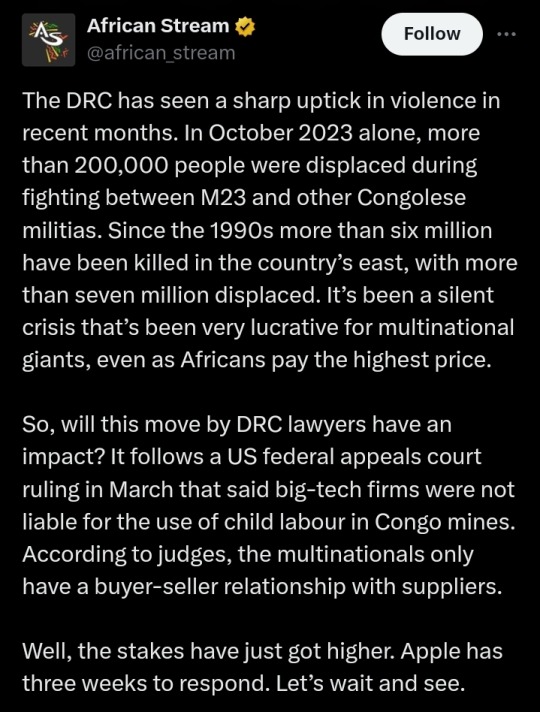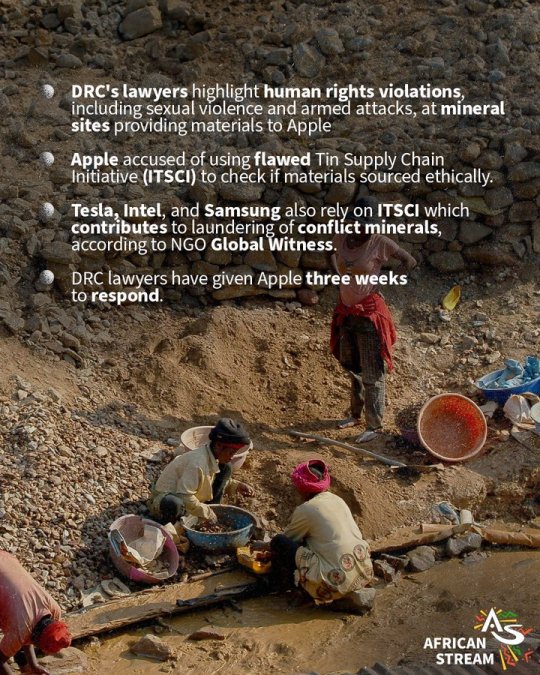Text
I want to die in Gaza. I'm not very interested in my life, but please don't let me see my sisters die in front of me. Please help us evacuate them from Gaza. There isn't much money left to evacuate them. Please donate and share the campaign
Link:

975 notes
·
View notes
Text
Here's a look at some of the mass graves uncovered in Gaza
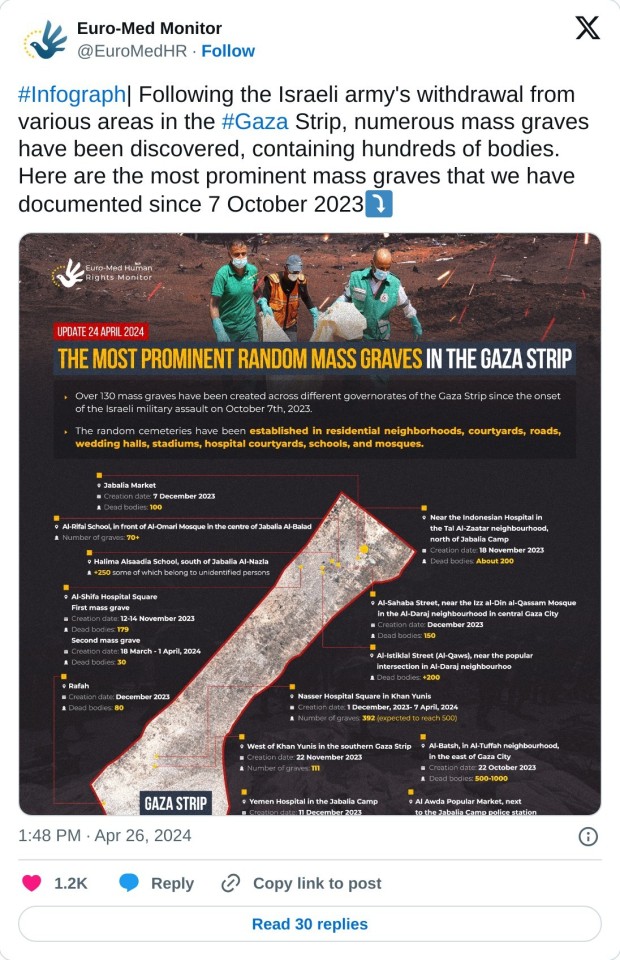

668 notes
·
View notes
Text
Another thing is that when this aggression started, we were so worried about winter and how displaced people in tents will survive it. Earlier this week the temperature in Gaza hit 38 degrees (100 Fahrenheit) and we are now wondering how will displaced people survive the heat in those tents.
6K notes
·
View notes
Text
i cannot be the first person to post this here but i am going so fucking insane about the gaia music collective's one day choir singing wait for me. the opening harmonies are you KIDDING me
#good casting on orpheus bc he has the voice of an angel!!!#every time he did his little niggun it brought a tear to my eye...#fairly certain that's chibueze ihuoma who is in fact from an official cast#hadestown#music
9K notes
·
View notes
Text
🚨EMERGENCY! PLEASE READ!🚨
Moataz @moatazart, Mariam, and baby Maria are set to make the dangerous journey from Gaza City in the north to Rafah in the south. From there, God willing, they will enter Egypt.
HOWEVER, the money they had allocated to procure shelter and food while in Egypt was utterly depleted by exploitative fees and hidden costs, which we break down in this post. Moataz speaks more on the situation in this post and on his own blog @moatazart, which we ask people to follow and boost. They have a fund going to raise the remaining money, but the fund only has a week and a half left before it closes! They are not even halfway to their goal!
Please share what you can with Moataz’s family so they can find safety and security in Egypt! They have no one in Egypt with whom they can stay and currently nowhere near enough money to secure shelter! After all they have survived, please don’t let this young family be left vulnerable! If they cannot procure food and shelter, they will be extremely vulnerable not only to the dangers of homelessness, but to groups and individuals who prey on refugees!
Safety for Gazan refugees does not end with leaving Gaza! If this campaign is not finished in LESS THAN 2 WEEKS, they will be homeless in Egypt! They are so close to a fresh start, please don’t let all the risks they are taking to find safety be for nothing!
4K notes
·
View notes
Text
direct action means someone actually DOES the thing and accomplishes the goal themselves
so like, if your goal is to shut down a prison, doing actions, however bold or strategic or successful, to pressure the government to shut it down, is definitionally not direct action.
It's indirect—your group didn't shut it down directly, you did something to get the government shut it down.
in this example, direct action would be storming the prison and releasing the prisoners. that's you actually directly achieving your goal.
sometimes indirect actions are the smart play! they may be the most effective thing you can do in your specific circumstances with your specific resources.
that does not make them "direct action" though.
272 notes
·
View notes
Text
April 28, 2024 - An unintentionally funny video by a zionist propagandist shows off some good organisation and discipline at the UCLA encampment for Palestine.
9K notes
·
View notes
Text
Donations Needed: Help a Gazan Skater Evacuate His Family
This is the link to help Hani. Hani is a skater currently living in Belgium and rebuilding his life. His family lives in Gaza and are suffering at the hands of the occupation. His father was killed and they lost their house. He is now responsible to protect his family.
He needs the funds to help them evacuate. Please donate and share this.
Read more about Hani’s situation below (from his GoFundMe):
“Hello, I'm Hani from Gaza, and I'm 23 years old. I've been living in Belgium for a year, and I'm an inline skater. I'm collecting donations to get my family out to safety from northern Gaza to Egypt because I can't afford the large amount of money needed. I'm here in Belgium in the process of rebuilding my life and achieving my dreams.”
“After losing my house and its destruction on October 13th, my family became displaced in tents, and on September 15th, I lost my father due to the attack on Al-Shifa Hospital. My father was suffering from kidney failure and passed away due to lack of treatment. He was the breadwinner of my family. Now I am responsible for my family, which consists of 10 members, including 3 minors, and my 18-year-old brother. The rest are my sisters, including two toddlers, one is 3 years old, and the other is 2 years old.”
“My siblings were university students and had dreams too, but because of the war, they lost everything; they lost the university, our home, and our father. They aspire to continue their studies at the university, but the war destroyed everything. I'm now trying to get them out of Gaza to Egypt to rebuild their shattered lives. To do that, they need to be evacuated, and they need to pay for the coordination into Egypt. Due to war time prices, they're asking for 5,000 euros per person to get them out of Gaza because northern Gaza has been completely wiped out, with insufficient food and people scattered among the rubble of homes under heavy bombardment. I hope you can help me through your donations or by sharing the story with friends. Thank you so much with lots of love.”
Please donate. Every little bit helps. If you cannot donate, share this.
https://gofund.me/5d6469bf
2K notes
·
View notes
Text
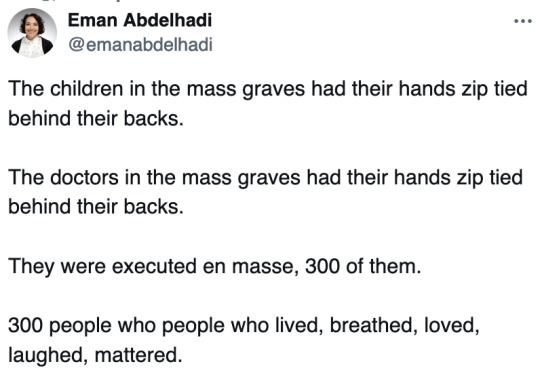
34,000 deaths is clearly an appalling undercount when watchdog groups learn about mass graves like this every week.
2K notes
·
View notes
Text
28 April 2024
Photographer Mahmoud Shalha documents a recovery operation by Gaza’s Civil Defense. Despite having no machinery or tools, Civil Defense recovery squad members courageously penetrated the dense rubble of the Obaid family home. They were finally able to recover the bodies of 5 family members, who were buried under the rubble of their home for 5 months. They are completely unrecognizable due to severe decomposition, and the scene is extremely graphic and disturbing, so viewing discretion is strongly advised. The link is provided for citation purposes only, and the video may be removed soon anyway due to graphic content.
WARNING: EXTREMELY GRAPHIC AND DISTURBING! VIEWER DISCRETION STRONGLY ADVISED!
75 notes
·
View notes
Text
also I'm working on a full reading list on Lebanese resistance and its historical context, but in the meantime this interview with Amal Saad covers all the basic points I want people to understand about Hizballah and its involvement in the current war:
youtube
#covers large-scale strategy and propaganda tactics#political relations in the region incl with hamas#helpful to situate the current state of things in history#politics#good meta
37 notes
·
View notes
Text
BBC: The ancient remains of Great Zimbabwe
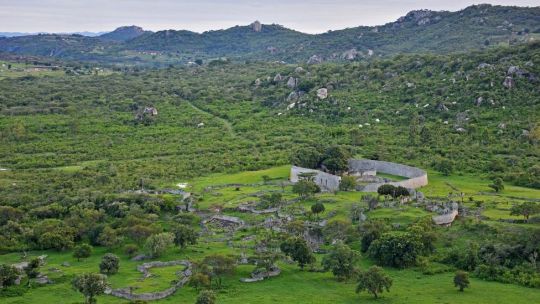
The ancient city of Great Zimbabwe was an engineering wonder. But archaeologists credited it to Phoenicians, Babylonians, Arabians – anyone but the Africans who actually built it.
W
Walking up to the towering walls of Great Zimbabwe was a humbling experience. The closer I got, the more they dwarfed me – and yet, there was something inviting about the archaeological site. It didn't feel like an abandoned fortress or castle that one might see in Europe: Great Zimbabwe was a place where people lived and worked, a place where they came to worship – and still do. It felt alive.
Great Zimbabwe is the name of the extensive stone remains of an ancient city built between 1100 and 1450 CE near modern-day Masvingo, Zimbabwe. Believed to be the work of the Shona (who today make up the majority of Zimbabwe's population) and possibly other societies that were migrating back and forth across the area, the city was large and powerful, housing a population comparable to London at that time – somewhere around 20,000 people during its peak. Great Zimbabwe was part of a sophisticated trade network (Arab, Indian and Chinese trade goods were all found at the site), and its architectural design was astounding: made of enormous, mortarless stone walls and towers, most of which are still standing.
However, for close to a century, European colonisers of the late-19th and early-20th Centuries attributed the construction to outsiders and explorers, rather than to the Africans themselves.
Indeed, the author of the first written European record of Great Zimbabwe seemed to be staggered by the very idea that it could have been built at all. Portuguese explorer Joao de Barros wrote in 1552 that, "There is masonry within and without, built of stones of a marvellous size, and there appears to be no mortar joining them."

Built between 1100 and 1450 CE, Great Zimbabwe was large and powerful (Credit: evenfh/Getty Images)
In the Shona language, zimbabwe translates approximately to "stone house", and because of the site's size and scope, it became known as Great Zimbabwe. Moreover, it was not the only such "Zimbabwe": there are remains of approximately 200 smaller settlements or trading posts spread across the region, from the Kalahari Desert in Namibia to Mozambique.
According to Munyaradzi Manyanga, a professor of archaeology and cultural heritage at Great Zimbabwe University, the position of Great Zimbabwe among these settlements has been widely debated. Some people have speculated that it was a capital city of a very large state, but to Manyanga, that seems unlikely. "Such a state would have been too large. One wouldn't have been able to manage that kind of extent and size. So most of the interpretations talk of these as having been influenced by Great Zimbabwe." He added that the Kingdom of Zimbabwe is considered to be made up of Great Zimbabwe and the smaller settlements located closer to it.

The walls, which are made of granite, are stacked precisely and do not use any mortar to hold them in place (Credit: 2630ben/Getty Images)
The walls, which are made of granite, are stacked precisely and do not use any mortar to hold them in place. "The quarrying of the granite, taking advantage of natural processes of weathering and the shaping of it into regular blocks was a major engineering undertaking by these pre-colonial communities," Manyganga said. Iron metallurgy was needed to make the tools required to cut the blocks; it was also needed to make trade goods subsequently found at the site. All of this points to a highly organised and technologically advanced society.
The population of Great Zimbabwe began to decline in the mid-15th Century as the Kingdom of Zimbabwe weakened (possible theories for the decline include a drop in mining output, overgrazing by cattle, and depleted resources), but the site itself was not abandoned. Manyganga explained that it was regularly visited by different Shona groups for spiritual reasons right up until colonisation by the British in the late 19th Century.
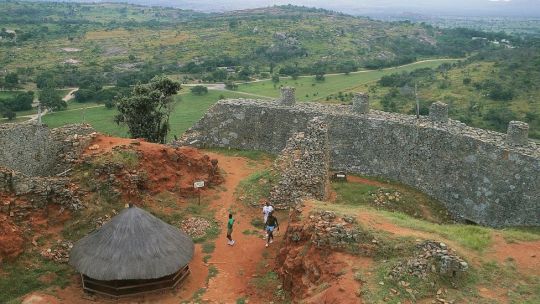
Europeans of the late-19th and early-20th Centuries attributed the construction to outsiders and explorers, rather than to the Africans (Credit: Agostini/Getty Images)
A decade later, in a speech to the Royal Geographic Society, British journalist Richard N Hall supported Bent's perspective after visiting the site himself. He talked about the artistic value of soapstone carvings that had been unearthed and the "marvellous cleverness" of a gold-mining operation that spanned hundreds of mines, before concluding that "it is quite a moral certainty that even the cruder methods of [these sciences'] application were imported from the Near East, and did not originate in South-East Africa." Instead, he and his colleagues held that Phoenicians, Arabians or Babylonians created the city.
According to Manyanga, "They wanted to use [this explanation] as a moral justification for colonising Zimbabwe. If there was this long-lost civilisation in this part of the world, there was nothing wrong with colonialism because they were resuscitating this old kingdom."
However, a few archaeologists of the time countered that the site was not nearly old enough to be from Biblical times. "The then-colonial government suppressed these views, and the official narrative in public media and museums was that Great Zimbabwe was of foreign origins," said Manyanga. This version of history was upheld through the 1960s and 1970s by the white-minority government of the colony. Only in 1980, when Zimbabwe achieved independence, could the new leaders finally affirm that the site was built by their own ancestors. During the 1960s, black nationalists had even settled on Zimbabwe as the name for the country they hoped to lead to freedom, harkening back to Great Zimbabwe.
Since 1980, local archaeological research has been slow to resume and has dealt largely with maintenance and repair. Research has instead focused on the satellite sites, in part because they were less disturbed by early excavations. Manyanga emphasised that scholarly understanding of Great Zimbabwe has shifted. "Eurocentric models interpreted the site as though you were looking at a castle in Europe. What has come to light from recent work is that Great Zimbabwe was built over a long period of time; it was not built once and then occupied, but grew over time. Even the walling came at a later stage because earlier on there were farming communities at Great Zimbabwe."
Today, the great ancient city remains just as important for Zimbabweans. Shona villages are located nearby, and many residents work to maintain the site. A religious centre is close by too, and the site still attracts worshippers who practice traditional Shona faiths.
"It was Africans who created this," said writer Marangwanda. "And over a millennium later it's still standing. It's a testament to who we are."
BBC Travel's Lost Civilisations delves into little-known facts about past worlds, dispelling any false myths and narratives that have previously surrounded them.
435 notes
·
View notes
Text

Mumia Abu-Jamal addressing the CUNY Gaza solidarity encampment.
3K notes
·
View notes
Photo
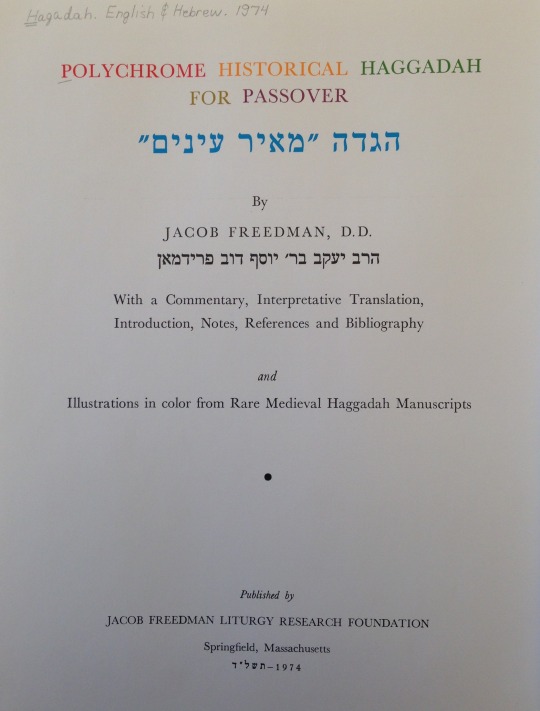
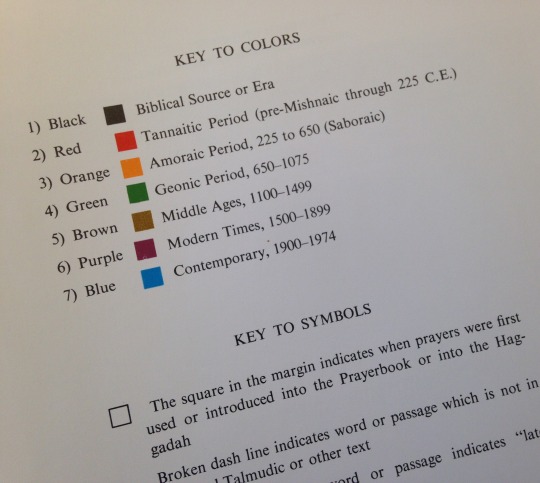


Typography Tuesday: Passover Edition
This Haggadah is color coded to indicate the age of various parts of the text, creating a visually striking historical commentary.
Haggadah. Polychrome historical Haggadah for Passover. [Hagadah Meʹir ʹenayim] With a commentary, interpretative translation, introd., notes, references, and bibliography, by Jacob Freedman. Illus. in color from rare medieval Haggadah mss. Springfield, Mass., Jacob Freedman Liturgy Research Foundation, 1974.
3K notes
·
View notes




